
Tel: 020 7620 1818 email: cookandbutler@btconnect.com
The Worshipful Company of Chartered Architects
www.architectscompany.org
Installation Court Lunch
September 2015, Stationers' Hall, London
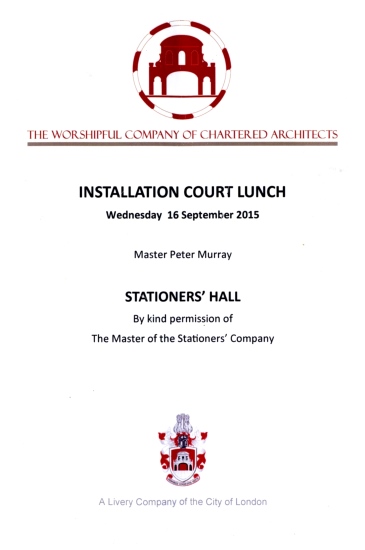

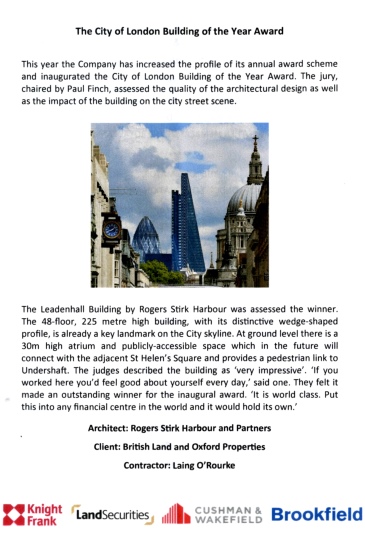
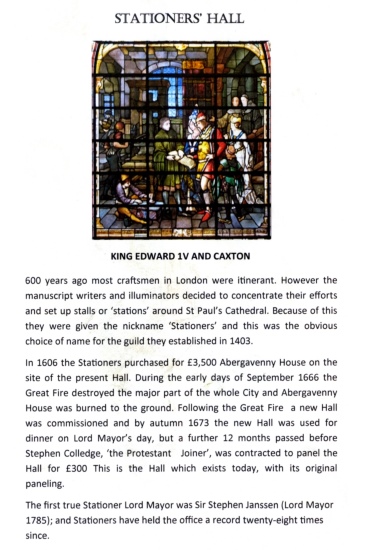

The City of London Building of the Year Award
This year the Company has increased the profile of its
annual award scheme and inaugurated the City of London Building of the Year
Award. The jury, chaired by Paul Finch, assessed the quality of the
architectural design as well as the impact of the building on the city
street scene.
The Leadenhall Building by Rogers Stirk Harbour was assessed the winner. The
48-floor, 225 metre high building, with its distinctive wedge-shaped
profile, is already a key landmark on the City skyline. At ground level
there is a 30m high atrium and publicly-accessible space which in the future
will connect with the adjacent St Helen's Square and provides a pedestrian
link to Lindershaft. The judges described the building as 'very impressive'.
'If you worked here you'd feel good about yourself every day,' said one.
They felt it made an outstanding winner for the inaugural award. 'It is
world class. Put this into any financial centre in the world and it would
hold its own.'
Architect: Rogers Stirk Harbour and Partners
Client: British Land and Oxford Properties
Contractor: Laing O' Rourke

Stationers' Hall
600 years ago most craftsmen in London were itinerant.
However the manuscript writers and illuminators decided to concentrate their
efforts and set up stalls or 'stations' around St Paul's Cathedral. Because
of this they were given the nickname 'Stationers' and this was the obvious
choice of name for the guild they established in 1403.
In 1606 the Stationers purchased for £3,500 Abergavenny House on the site of
the present Hall. During the early days of September 1666 the Great Fire
destroyed the major part of the whole City and Abergavenny House was burned
to the ground. Following the Great Fire a new Hall was commissioned and by
autumn 1673 the new Hall was used for dinner on Lord Mayor's day, but a
further 12 months passed before Stephen Colledge, 'the Protestant Joiner',
was contracted to panel the Hall for £300 This is the Hall which exists
today, with its original paneling.
The first true Stationer Lord Mayor was Sir Stephen Janssen (Lord Mayor
1785); and Stationers have held the office a record twenty-eight times
since.

Installation Court Lunch
September 2014, Armourers' Hall, London
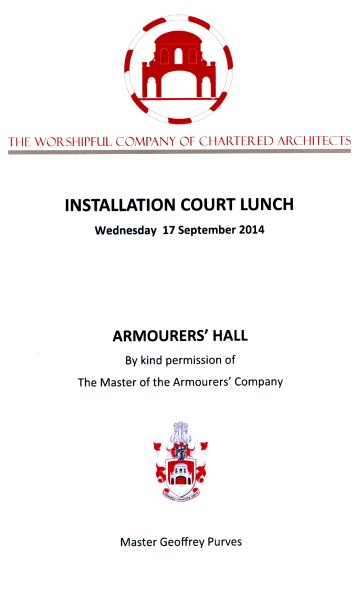

![]()
The Company is a 'modern company' having been founded in
1984 and is numbered 98 in the order of precedence in the Livery. Its logo
and centrepiece of the coat of arms is Temple Bar which was designed by Sir
Christopher Wren in 1672.
The Company combines the ancient history and governance of the City with its
modern role as a global business hub featuring world-class architecture and
place making.
It seeks to support the City in delivering a better environment; it works
with the Lord Mayor to promote business overseas; it provides a professional
and social network for those who practice architecture and those who benefit
from it. The Company supports the training of students as well as a range of
charities including the Architects Benevolent Society and Open House
Weekend.
Membership of the Company, as a Freeman or Liveryman, is open to all
architects and to those who are committed to the promotion of architecture
and the built environment generally.
Students are welcomed as apprentice members and are indentured to a member
of the Company who will act as a mentor through their years of training.
This ancient concept of pupillage is of increasing relevance today.
![]()
Annual Livery Banquet
March 2013, Carpenters' Hall, London
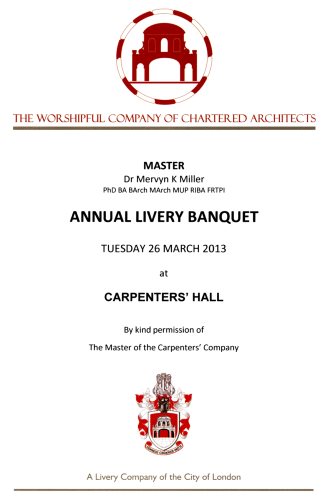

![]()
Installation Court Lunch
September 2012, Watermen's Hall, London
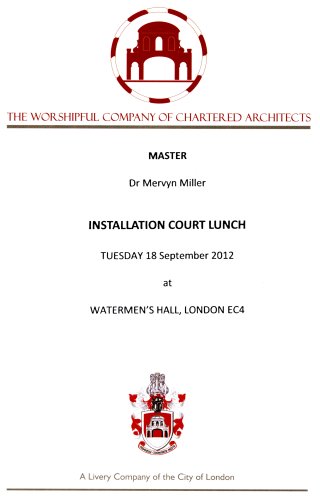
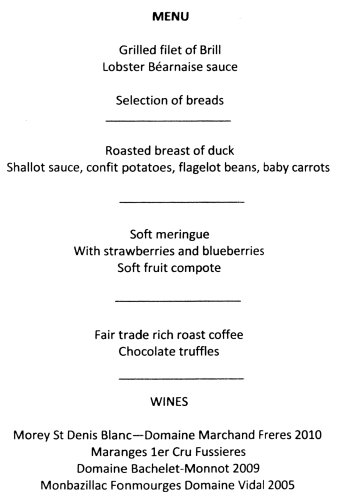
![]()
Election Court Dinner
July 2010, Armourers' Hall, London
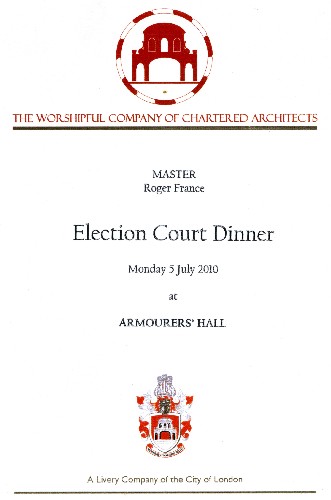
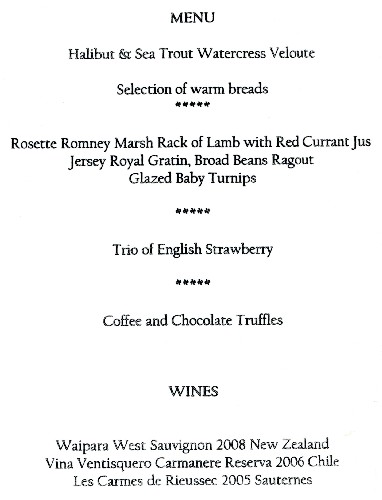
![]()
THE WORSHIPFLUL COMPANY OF CHARTERED ARCHITECTS
In 1984, during the 150th Anniversary celebrations of the Granting of the Royal Charter by King William IV to the RIBA, a number of architects decided to form a Livery Company to represent the profession alongside those formed by other modern professions. A Company was formed and, after four years’ intensive work, was able to petition the Court of Aldermen for Livery status, which was granted on 13 April 1988. The Letters Patent confirming the grant were presented to the Company by The Rt. Hon. The Lord Mayor Sir Christopher Collett GBE at a ceremony at The Mansion House on 21 November 1988 and the Company became The Worshipful Company of Chartered Architects.
![]()